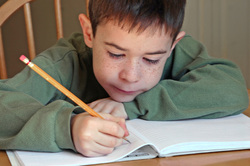
According to Dr. Sally Shaywitz, "Kindergarten is in many ways a watershed in identifying children who are vulnerable to dyslexia." Parents and teachers should closely monitor a child's progress in learning to read, beginning no later than kindergarten.
Many schools now routinely screen every kindergartner when they register or near the beginning of the year. If a child's results put him in the lowest 20-30%, he is considered "at risk" for reading failure. Schools ideally should provide classroom, group or individual interventions to these children. As a parent, you should ask where your child falls and if she is at risk, ask what the school is specifically doing to address it.
According to Dr. Reid Lyon, research psychologist and Chief of Child Development and Behavior Branch at the National Institute of Child Health and Human Development (NICHD), "Most children can learn to read if difficulties are detected in kindergarten and first grade and the appropriate early interventions are applied. Prevention and early intervention programs that teach phoneme awareness and phonics skills and develop reading contexts where children have an opportunity to practice skills are more beneficial than approaches that are less structured and direct. Help needs to be provided before nine years of age; after that time, children respond more poorly to reading instruction."
The moral of the story? Don't wait, see and hope. Address your child's reading struggles now by learning all you can about what he needs, what help he is getting, and what else might need to be done.



 RSS Feed
RSS Feed